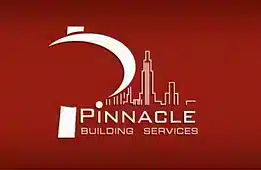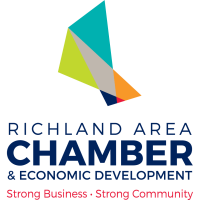Optimizing space utilization is about so much more than just arranging office furniture. It’s a strategic approach that can drive productivity, save costs, and ultimately contribute to an organization’s success. After all, a cramped and stuffy workplace is a recipe for disaster. Even so, it can be hard to know where to start – so we’re here to help! In this blog post, you’ll find all the strategies you need to take your space utilization to the next level!
Understanding Space Utilization
Space utilization refers to the measure of how efficiently a space is used, typically in the context of a workplace or building. This concept is based on how frequently and effectively employees or occupants use a given area.
In its simplest terms, space utilization can be defined as occupancy (the number of people using a space) divided by capacity (the total number of workspaces or the total size of the space) measured over time. For example, if 150 people use a cafeteria designed to accommodate 200 people, the space utilization is 75%.
However, space utilization goes beyond just numbers. It also involves understanding how the space is being used. For instance, a conference room might be fully occupied during certain hours but remain empty for the rest of the day. In this case, despite high occupancy during peak hours, the overall space utilization might be low.
Therefore, effective space utilization takes into account not just how many people are in a space, but also when and how they’re using it. This information can help organizations make informed decisions about space planning and management, ultimately leading to more efficient and productive work environments.
The Relationship between Space Utilization and Workplace Efficiency
Optimizing your space can significantly contribute to increased productivity and overall workplace efficiency in several ways:
- Promotes Collaboration: Well-planned spaces can encourage collaboration by providing areas where teams can meet, brainstorm, and work together effectively. This can lead to better communication, enhanced problem-solving, and more innovative ideas.
- Improves Focus: By creating designated quiet zones or private workspaces, employees can concentrate on individual tasks without distractions, boosting their productivity.
- Enhances Workflow: Efficient space utilization can streamline workflows by logically arranging workstations, equipment, and resources. This reduces wasted time spent moving around the office and allows for smoother operations.
- Boosts Employee Morale: A well-organized, comfortable workspace can enhance employee satisfaction and morale. When employees feel good about their work environment, they are likely to be more motivated, engaged, and productive.
- Reduces Costs: Effective space utilization can also lead to significant cost savings. By maximizing the use of existing space, companies can avoid or delay expensive relocations or expansions. In addition, efficient use of space can lower energy costs by reducing the need for lighting, heating, or cooling unused areas.
- Adapts to Changing Needs: In today’s dynamic work environment, needs can change rapidly. Optimized space utilization allows for flexibility and adaptability, whether it’s accommodating new hires, enabling social distancing, or supporting hybrid work models.
- Facilitates Accessibility: Proper space utilization ensures that essential resources and facilities are easily accessible to all employees. This not only improves efficiency but also promotes inclusivity in the workplace.
Optimizing space utilization in this way supports the way people work, leading to a more productive and efficient workplace.
Strategies for Optimizing Space Utilization
Optimizing space utilization requires strategic planning and execution. Here are some effective strategies that facilities managers can use:
- Conduct a Space Audit: The first step in optimizing space utilization is understanding current usage. Conduct a comprehensive space audit to identify how space is currently being used, including occupancy rates, peak usage times, and underutilized areas.
- Implement Flexible Workspaces: Consider introducing flexible workspaces such as hot-desking, shared workspaces, or coworking spaces. This allows multiple employees to use the same workspace at different times, maximizing its usage.
- Incorporate Technology in Space Management: Use technology to aid in space management. For instance, occupancy sensors can provide real-time data on space usage, while space management software can help analyze data and generate actionable insights.
- Encourage Remote Work: If applicable to your organization, encouraging remote work can free up office space and reduce the need for dedicated workstations. This strategy has become particularly relevant in the era of hybrid work models.
- Regularly Review and Adjust the Space Layout: Space needs can change over time, so it’s important to regularly review and adjust the layout. This could involve moving furniture, reallocating spaces, or making other changes to better suit current needs.
- Design for Multipurpose Use: Design spaces that can serve multiple purposes. For example, a meeting room could also serve as a quiet workspace when not in use for meetings.
- Eliminate Clutter: Regularly decluttering the workspace can free up space and make the environment more pleasant and conducive to work.
- Invest in Space-Saving Furniture: Consider investing in space-saving furniture like foldable desks, stackable chairs, or wall-mounted storage units. These can help maximize space without compromising functionality.
With these simple strategies, you can easily see how a little effort goes a long way!
Challenges in Space Optimization
Facilities managers may face several challenges when optimizing space utilization. Here are a few common obstacles and ways to overcome them:
- Lack of Accurate Information: Without precise data on how spaces are being used, it’s difficult to make informed decisions. To overcome this, facilities managers can use technologies like occupancy sensors and space management software to gather real-time data on space usage.
- Resistance to Change: Employees may resist changes to their workspace, especially if they’re used to having a dedicated desk or office. Communicating the benefits of space optimization, involving employees in the planning process, and gradually implementing changes can help ease this transition.
- Budget Constraints: Optimizing space may require investments in new furniture, technology, or renovations. Managers should present a clear business case highlighting the long-term cost savings and productivity benefits of effective space utilization to secure the necessary funding.
- Balancing Different Needs: Different teams or individuals may have different space needs. For instance, some may need quiet spaces for concentrated work, while others need collaborative spaces. A mix of open-plan areas, private spaces, and flexible workstations can help cater to diverse needs.
- Managing Remote and In-Office Work: With hybrid work models becoming more common, facilities managers must balance the needs of both remote and in-office workers. This might involve creating ‘hot desks’ for employees who only come in occasionally and ensuring remote workers have access to necessary resources.
- Adapting to Growth or Downsizing: As organizations grow or downsize, their space needs change. Regularly reviewing and adjusting space layouts and usage policies can help facilities managers adapt to these changes.
By proactively addressing these challenges, facilities managers can solve each and every problem as it comes.
We get it – all these strategies to optimize your workplace’s space utilizatican seem daunting to say the least. However, it’s important to remember that even small steps can lead to significant improvements. Start with that space audit, then gradually implement other changes based on what you find there. Don’t waste another moment – embrace the challenge and start making a difference in your organization today!




